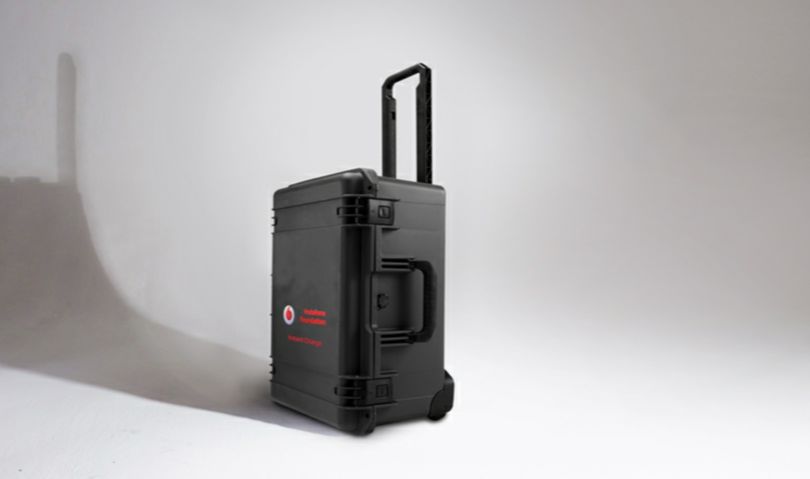The Vodafone Foundation has unveiled two devices aimed at helping refugees stranded in camps or locations without communications infrastructure.
One is Instant Charge, a portable outdoor mobile charger that can charge 66 devices at once. This was designed to support the UNHCR in its work with refugees on the shores of Europe, where camps have good mobile coverage but little infrastructure for inhabitants to charge their phones. The equipment, which will also be used to support the Vodafone Foundation’s disaster relief work, will be shown this week at Mobile World Congress in Barcelona.
The other innovation is Instant Classroom Lite, again developed in conjunction with the UNHCR, designed for teaching large classes in refugee camps in Africa. It consists of a laptop, which acts as the server, a projector, and sound system and has 3G and 4G internet connectivity. Instant Classroom Lite can be easily stored and transported between schools in refugee settlements, such as Dadaab in Kenya, and can be up and running in 10 minutes.
It builds on the foundation’s Instant Classroom ‘digital school in a box’ kit, launched at Mobile World Congress in 2015, but is less than half the weight.
66 Phones
Instant Charge weighs about 23kg and, combined with a generator or other power source, such as solar, can charge up to 66 phones simultaneously. It’s built in four modules to prevent overcrowding in emergency environments and has been designed to be used outdoors with a setup time under 10 minutes.
Oisin Walton of the Vodafone Foundation said: “When the foundation, alongside UNHCR, assessed how it could help, one of the requests from refugees was: ‘Where can I charge my mobile?’ Unlike refugees in many parts of the world, many of the refugee families arriving in Europe have smartphones, rather than feature phones, and there is an increasing need for access to power. Instant Charge was developed in response to that need”.
Designed for teaching large classes in refugee camps in Africa, Instant Classroom Lite will be used to run interactive classes in schools without power or internet access and includes a server with mobile educational content that teachers can access locally. It can be powered via a solar panel, a mains socket or a 12V car socket.








